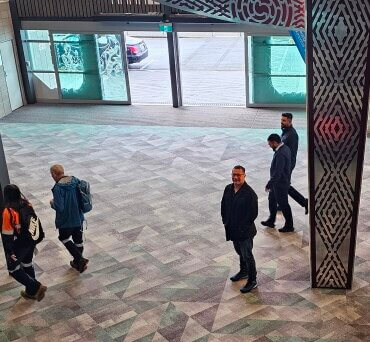
Hamilton Airport pou tiaki (cultural ambassador) Norman Hill, beside Taunga Rererangi o Kirikiriroa sculpture by Eugene Kara.
Ben Langley could have been forgiven for wearing a smug smile at the blessing of Hamilton Airport’s international terminal last week.
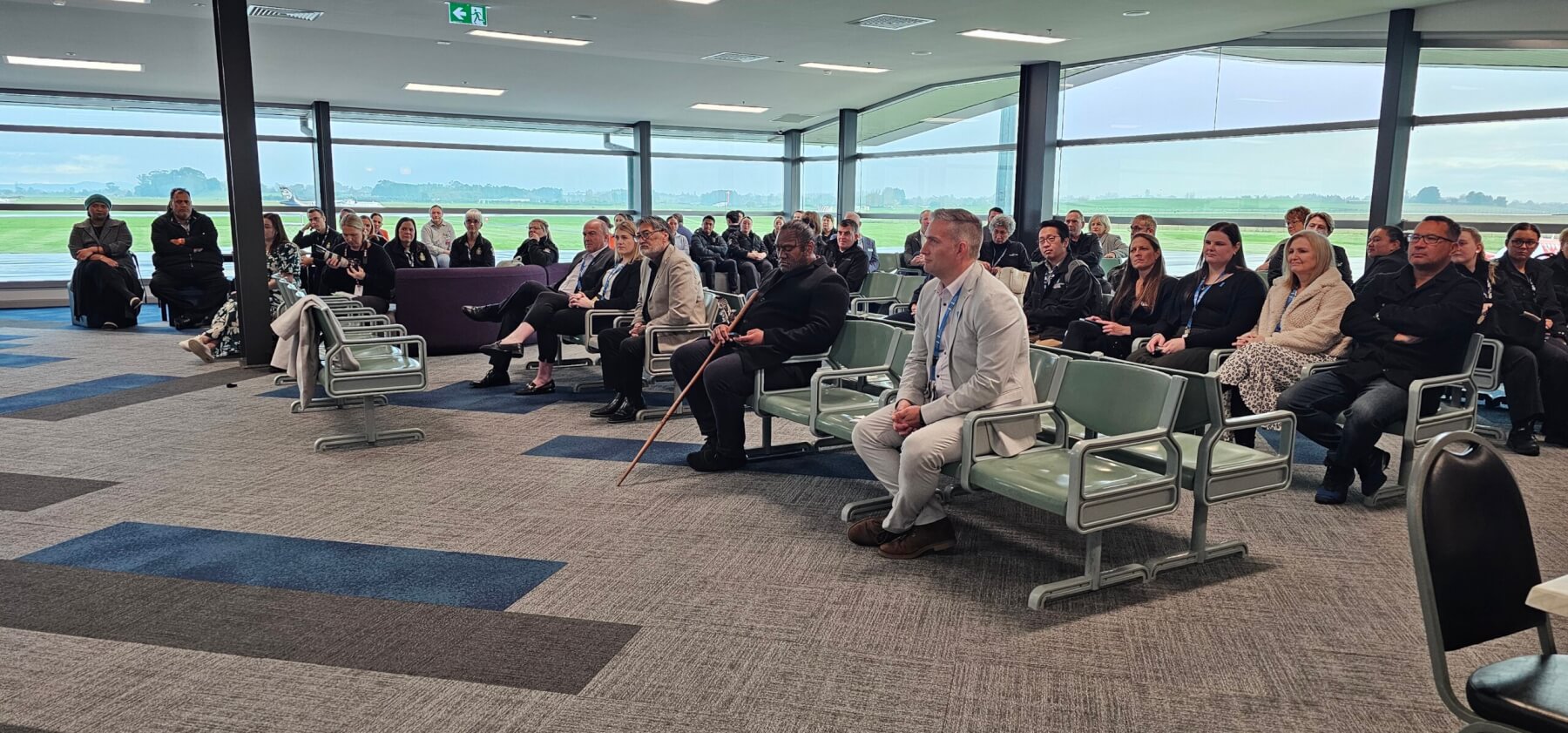
Hamilton Airport Operations group general manager Ben Langley, front, inside the new international waiting room. Photo: Mary Anne Gill
With just days to go before international flights resume, the Operations Group general manager — who brings firsthand aviation experience as a commercial pilot — is confident that nothing has been overlooked.
Even the curveball Air New Zealand threw last month when it announced domestic jets – A320s adding approximately 25,000 seats a year – would also return on a Christchurch-Hamilton route.
“The nuts and bolts are in place,” Langley said, confirming the airport had been future-proofed to accommodate domestic jets as part of its design process.
“We’ve got enough know-how and beans to get across the finish line. We assumed there would be interest in domestic jet services — and that’s played out exactly as we thought.”
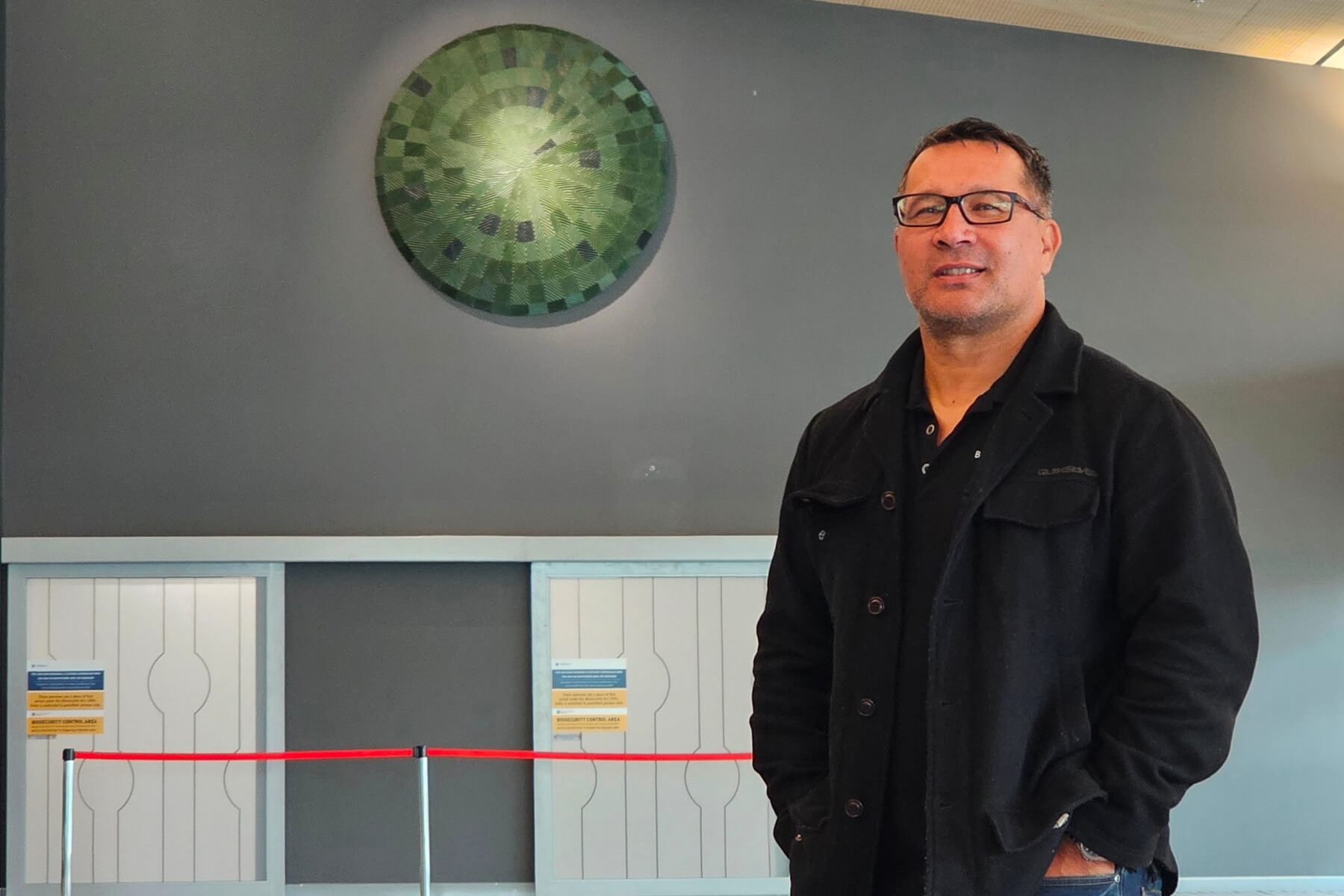
Hamilton Airport pou tiaki (cultural ambassador) Norman Hill with Kirikiriroa: a smooth belly – a Brett Graham kauri sculpture that evokes the mana of the Waikato. Photo: Mary Anne Gill
Any domestic services with over 100 seats – the A320s have 171 seats – require passenger screening, similar to international flights. They have been installed.
Langley has flown in and out of Hamilton many times, landing and taking off from the country’s 2.2 kilometre runway, the fourth longest in the country.
His favourite approach is past Mount Pirongia – there are more than a dozen possible approaches.
“Everything is laid out in front of you. It’s beautiful, an absolutely beautiful part of the country – I can see why the Aussies want to come over and kick back.”
Another person excited about the increase in passengers is airport pou tiaki (cultural ambassador) Norman Hill.
The airport is more than just a travel hub – it is also a place where cultural heritage, environmental stewardship and modern infrastructure intersect.

Ataria-Jay Tahapeehi, Julia Aramoana, Te Raumako Karena, Sonny Karena, Joshua Wikiriwhi-Heta, Norman Hill, Michael Wikiriwhi-Heta of Ngāti Haua at the airport blessing. Photo: Mary Anne Gill
Hill wrote the cultural narrative report which explores the history of the land before the airport existed. It includes genealogy and the stories of the people who lived on the land before Europeans came.
The site was once surrounded by areas rich in cultural significance. The flat land served as a natural access point connecting communities via rivers and trails long before roads or runways existed.
The terminal’s design pays tribute to native flora and fauna, said Hill and particularly the critically endangered long-tailed bat or pekapeka-tou-roa.
The species, which flies and roosts in cavities, inspired key architectural elements of the terminal.
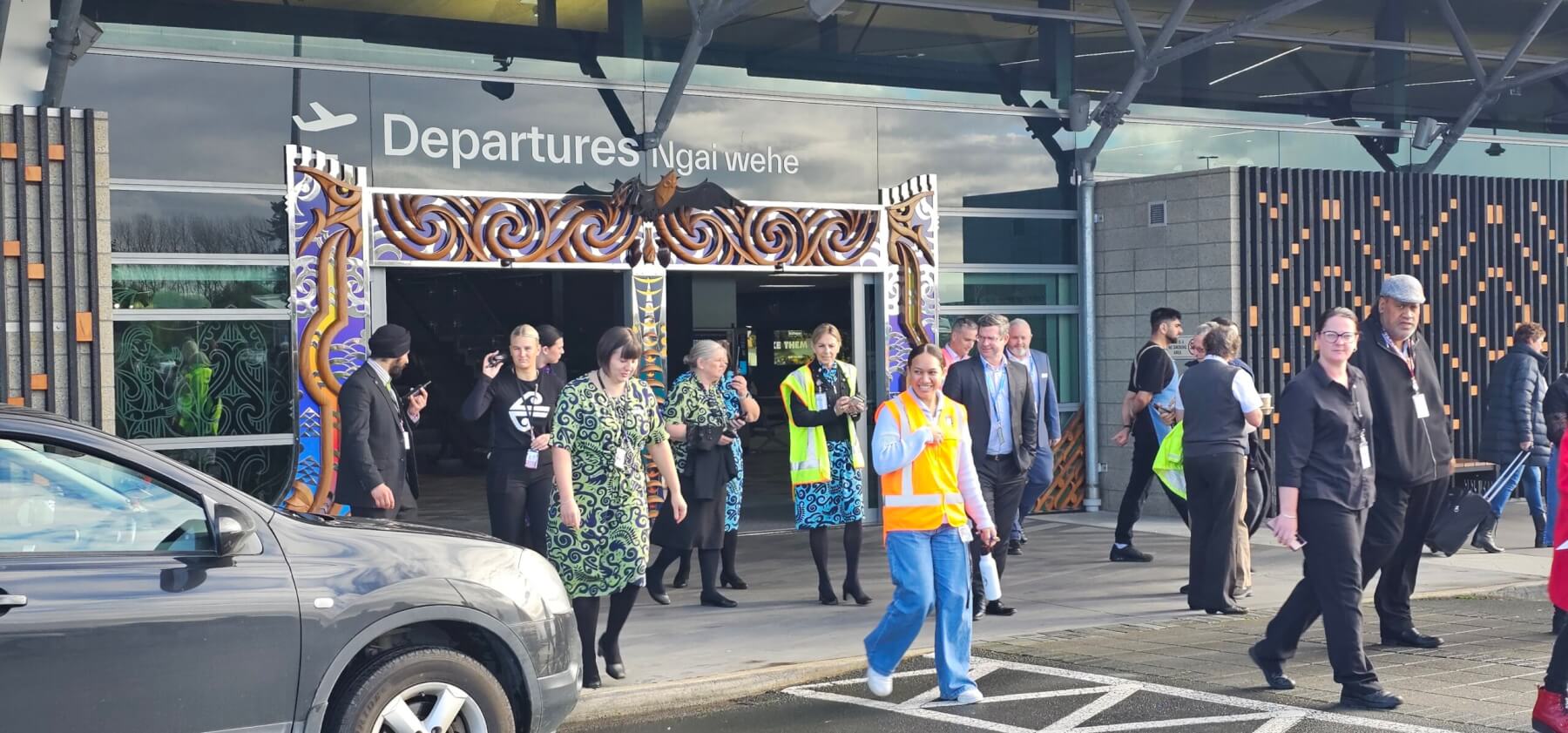
Soon after the blessing, the terminal was evacuated due to a fire alarm. Photo: Mary Anne Gill
“The entrance ceiling has small holes designed to mimic the bat’s roosting spots. When you look up, the blue ceiling represents the sky, and for a moment, you become the pekapeka-tou-roa—a symbolic connection between the land, the sky, and flight,” he said.
The theme continues throughout the terminal, with cultural motifs, bilingual signs and the carpet which has colour running through it which reinforces the sense of place – blue on the mezzanine floor, brown on the ground floor.
The airport’s Māori name, Kirikiriroa – Te Papa Rererangi, translates to “the platform from which one flies into the sky,” grounding the facility in its cultural context.
The vision for Hamilton Airport is not just functional — it’s emotional and spiritual, said Hill.
“When you arrive, you should feel like you’ve been welcomed into someone’s whare. You get a hongi, a cup of tea, and you leave feeling seen, respected, and cared for,” he said.
With the countdown on and the terminal ready for Jetstar next week, Hamilton Airport is poised to enter that new chapter Langley and Hill talk about.
“It’s a place of connection — between people, between cultures, and between the earth and the sky,” said Hill.
“There’s a bit going on now at the airport. It’s very exciting,” said Langley.
See: Jets return to Hamilton Airport
See: Sydney – we’re ready for you
See: Why they flew back
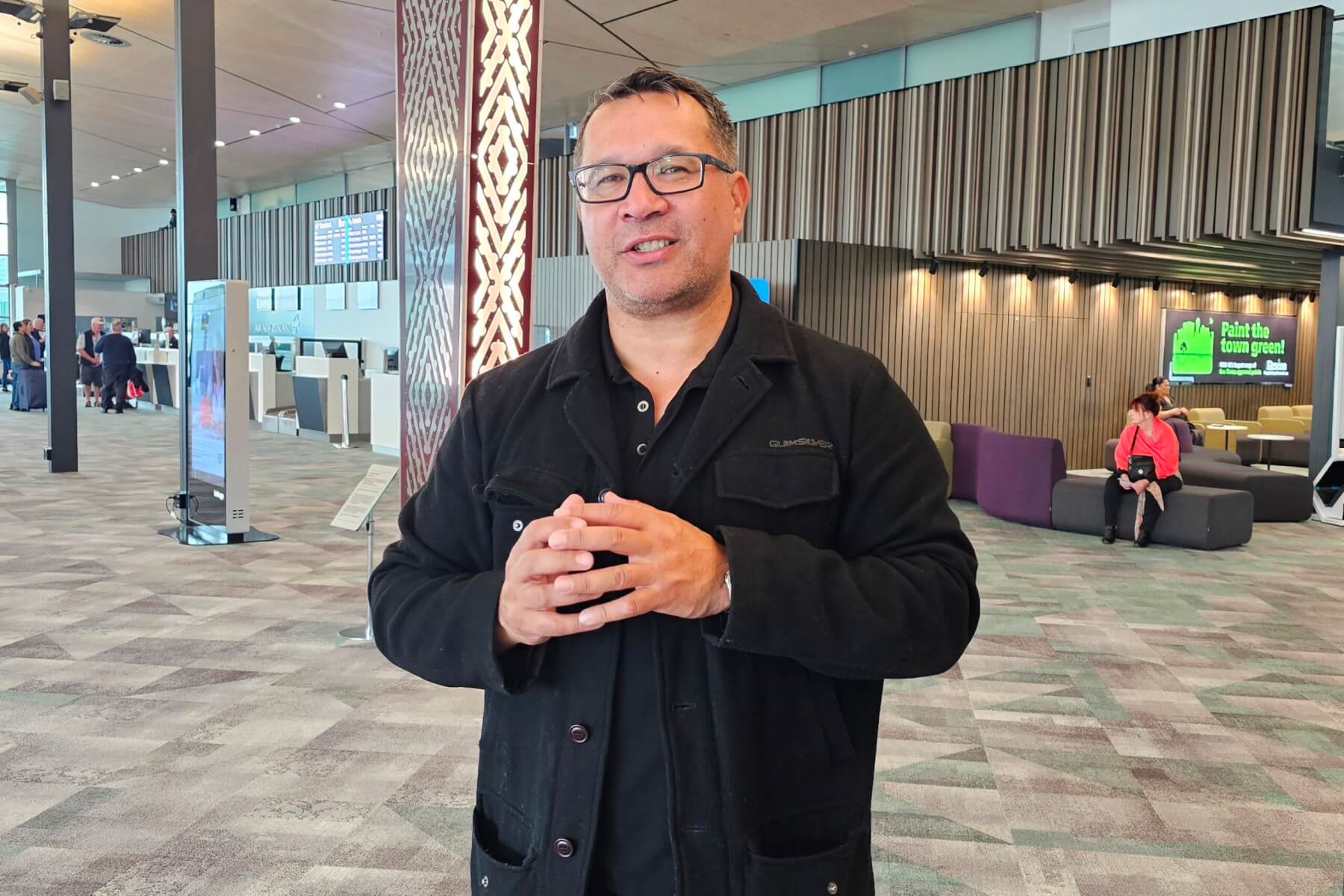
Hamilton Airport pou tiaki (cultural ambassador) Norman Hill, in front of Taunga Rererangi o Kirikiriroa sculpture by Eugene Kara explains how the series of culturally significant artworks in the terminal came together. Photo: Mary Anne Gill
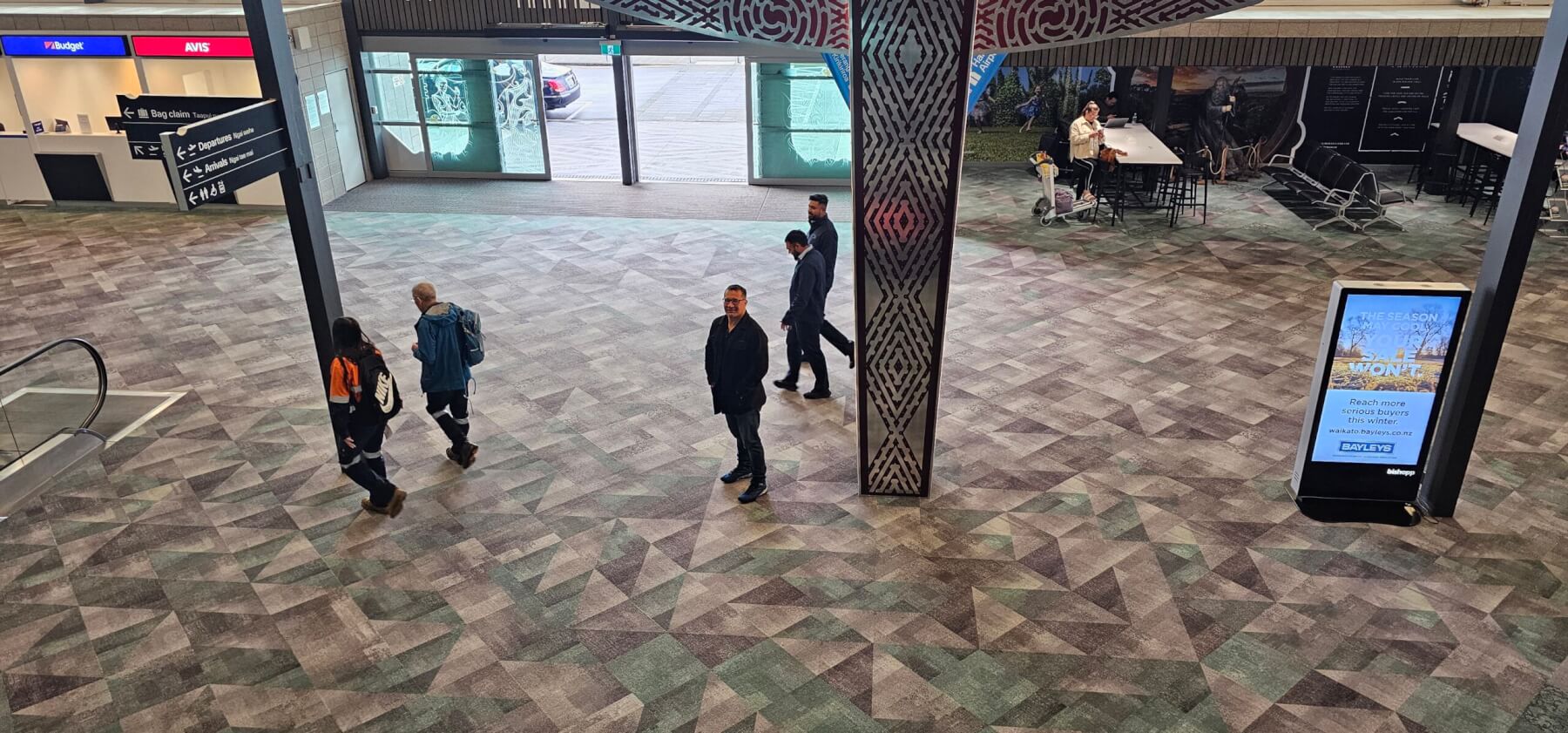
Hamilton Airport pou tiaki (cultural ambassador) Norman Hill, beside Taunga Rererangi o Kirikiriroa sculpture by Eugene Kara. Photo: Mary Anne Gill








